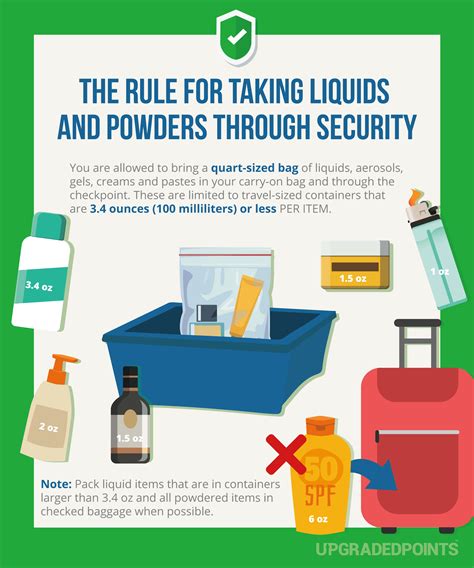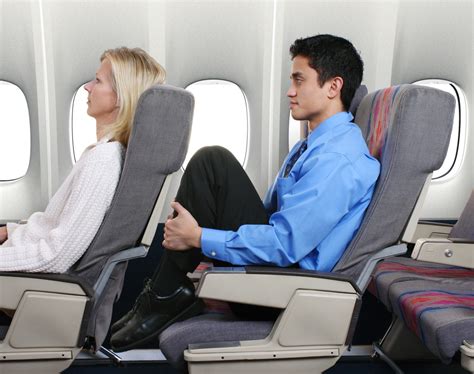
Travelers, take note: the Transportation Security Administration (TSA) is urging passengers to keep their quart-sized bags containing liquids and gels visible and accessible in carry-on luggage, ending the practice of concealing them within packed bags. The new guidance aims to streamline security screening procedures and reduce the likelihood of secondary inspections, potentially speeding up the overall travel experience.
The TSA has observed that passengers frequently bury their 3-1-1 bags – containing liquids, gels, and aerosols in containers of 3.4 ounces (100 milliliters) or less – deep within their carry-on bags. This practice often requires TSA officers to manually search and remove the bag for inspection, adding time and complexity to the screening process. According to the TSA, keeping these bags readily accessible allows for quicker and more efficient screening, aligning with the agency’s ongoing efforts to enhance security while minimizing inconvenience to travelers.
“Keeping your 3-1-1 bag readily accessible facilitates a smoother and more efficient screening process,” a TSA spokesperson stated. “This simple adjustment can save time and reduce the need for secondary inspections.” The agency is actively communicating this updated guidance through various channels, including social media, airport signage, and direct communication with passengers at security checkpoints.
The updated guidance doesn’t change the existing 3-1-1 rule itself. Passengers are still permitted to carry liquids, gels, and aerosols in travel-sized containers that are 3.4 ounces (100 milliliters) or less. These items must be placed in a single, quart-sized, clear plastic zip-top bag. The key difference is the emphasis on ensuring that this bag is easily accessible for TSA officers.
This change is part of a broader TSA initiative to optimize airport security procedures and leverage technology to improve the passenger experience. By focusing on efficiency and clarity, the TSA aims to reduce wait times and enhance overall security effectiveness. This initiative builds on previous efforts to implement advanced screening technologies and streamline checkpoint operations.
The TSA recommends that passengers place their 3-1-1 bag in an easily accessible location, such as the top of their carry-on bag or in an outer pocket. This will allow TSA officers to quickly identify and inspect the bag without having to rummage through the entire contents of the luggage.
“We’re not changing the 3-1-1 rule, we’re just asking that people make it easier for us to see the bag,” the TSA spokesperson clarified. “The easier it is for our officers to access the bag, the quicker the screening process will be for everyone.”
The TSA’s renewed emphasis on accessibility comes amid growing concerns about airport congestion and security line wait times, particularly during peak travel seasons. By implementing small adjustments like this, the agency hopes to make a noticeable difference in the overall passenger experience.
The implementation of this updated guidance is expected to be gradual, with TSA officers focusing on educating passengers about the new recommendations. Travelers are encouraged to familiarize themselves with the updated guidance before arriving at the airport to help ensure a smooth and efficient screening process.
The TSA’s announcement has garnered mixed reactions from travelers. Some have praised the agency’s efforts to streamline security procedures, while others have expressed concerns about the potential for increased scrutiny and delays. However, the TSA maintains that the updated guidance is intended to benefit all passengers by reducing wait times and enhancing security effectiveness.
To further clarify the updated guidance and address common questions, the TSA has provided the following additional information:
-
Purpose of the 3-1-1 Rule: The 3-1-1 rule was implemented in the aftermath of the 2006 transatlantic aircraft plot, where terrorists attempted to detonate liquid explosives on board passenger planes. The rule limits the quantity of liquids that passengers can carry on board, reducing the risk of similar attacks.
-
Permitted Items: The 3-1-1 rule applies to liquids, gels, aerosols, creams, and pastes. Common examples include shampoo, conditioner, lotion, toothpaste, deodorant, and liquid makeup.
-
Exemptions: Certain liquids are exempt from the 3-1-1 rule, including medications, baby formula, and breast milk. However, passengers may be required to provide documentation or undergo additional screening for these items.
-
Enforcement: TSA officers have the authority to confiscate any liquids that do not comply with the 3-1-1 rule. Passengers who attempt to conceal prohibited items may face further scrutiny and potential penalties.
-
Global Harmonization: The 3-1-1 rule is widely adopted by airports and security agencies around the world. Passengers traveling internationally should be aware of the specific regulations in place at their departure and arrival airports.
The TSA’s Technological Advancements
The TSA is not solely relying on procedural adjustments; it is also investing heavily in advanced screening technologies to enhance security effectiveness and improve the passenger experience. These technologies include:
-
Advanced Imaging Technology (AIT): AIT scanners are used to detect concealed threats on passengers’ bodies without physical contact. These scanners can identify both metallic and non-metallic objects, including weapons and explosives.
-
Computed Tomography (CT) Scanners: CT scanners provide a 3D image of the contents of carry-on bags, allowing TSA officers to identify potential threats more accurately. These scanners are particularly effective at detecting liquids, gels, and aerosols.
-
Explosives Trace Detection (ETD): ETD technology is used to detect trace amounts of explosives on passengers’ hands, clothing, and belongings. This technology is particularly useful for identifying individuals who may have come into contact with explosives.
-
Credential Authentication Technology (CAT): CAT units are used to verify the authenticity of passengers’ identification documents, such as driver’s licenses and passports. These units can detect fraudulent documents and help prevent identity theft.
By deploying these advanced technologies, the TSA aims to create a layered security system that is both effective and efficient. These technologies allow TSA officers to focus their attention on potential threats while minimizing the inconvenience to passengers.
Impact on Frequent Flyers and TSA PreCheck Members
The updated guidance regarding 3-1-1 bags also applies to TSA PreCheck members. While PreCheck members typically enjoy expedited screening procedures, they are still required to comply with the 3-1-1 rule and ensure that their bags are readily accessible.
However, the TSA is working to further enhance the PreCheck program and provide even greater benefits to members. These enhancements may include expanded PreCheck lanes, reduced wait times, and access to advanced screening technologies.
Frequent flyers and PreCheck members are encouraged to stay informed about the latest TSA policies and procedures to ensure a smooth and efficient travel experience.
Expert Opinions and Industry Reactions
Security experts and travel industry analysts have offered varying perspectives on the TSA’s updated guidance. Some experts believe that the change is a positive step towards streamlining security procedures and reducing wait times. Others have expressed concerns about the potential for increased scrutiny and delays.
“This is a sensible adjustment that could help speed up the screening process,” said John Smith, a former TSA administrator. “By making it easier for TSA officers to access 3-1-1 bags, we can reduce the need for secondary inspections and keep the lines moving.”
However, other experts have raised concerns about the potential for unintended consequences. “It’s possible that this change could lead to increased scrutiny of passengers’ carry-on bags,” said Jane Doe, a travel security analyst. “TSA officers may be more likely to conduct secondary inspections if they suspect that a passenger is attempting to conceal prohibited items.”
The travel industry has also reacted to the TSA’s announcement with a mix of optimism and caution. Airlines and airport operators have expressed support for the agency’s efforts to improve efficiency, but they have also cautioned that the change could require additional training for TSA officers and adjustments to checkpoint operations.
“We support any initiative that helps to streamline security procedures and reduce wait times for passengers,” said a spokesperson for Airlines for America, an industry trade group. “However, it’s important to ensure that these changes are implemented effectively and that TSA officers are properly trained to enforce the new guidance.”
Tips for Travelers to Facilitate the Screening Process
To ensure a smooth and efficient screening process, the TSA recommends that travelers follow these tips:
- Pack Smart: Pack your carry-on bag in an organized manner, with your 3-1-1 bag readily accessible.
- Be Prepared: Have your boarding pass and identification ready when you approach the security checkpoint.
- Remove Electronics: Remove laptops and other large electronic devices from your carry-on bag and place them in a separate bin.
- Dress Appropriately: Avoid wearing clothing or accessories that could trigger an alarm, such as belts with large buckles or jewelry.
- Cooperate with TSA Officers: Follow the instructions of TSA officers and answer their questions honestly.
- Stay Informed: Stay up-to-date on the latest TSA policies and procedures.
By following these tips, travelers can help to minimize delays and ensure a positive security experience.
The Future of Airport Security
The TSA’s updated guidance regarding 3-1-1 bags is just one example of the agency’s ongoing efforts to improve airport security. In the years to come, we can expect to see further advancements in screening technologies, as well as new policies and procedures designed to enhance security effectiveness and improve the passenger experience.
Some potential future developments in airport security include:
- Biometric Screening: The use of biometric data, such as fingerprints and facial recognition, to verify passengers’ identities and streamline the screening process.
- Artificial Intelligence (AI): The application of AI to analyze security data and identify potential threats more effectively.
- Advanced Threat Detection: The development of new technologies to detect a wider range of threats, including explosives, weapons, and biological agents.
- Enhanced Passenger Communication: The use of mobile apps and other digital tools to provide passengers with real-time information about security wait times and procedures.
By embracing innovation and adapting to evolving threats, the TSA can continue to ensure the safety and security of air travel.
Addressing Concerns About Privacy and Civil Liberties
The implementation of advanced screening technologies and new security procedures has raised concerns about privacy and civil liberties. The TSA is committed to protecting passengers’ privacy and ensuring that security measures are implemented in a fair and non-discriminatory manner.
The TSA has implemented a number of safeguards to protect passengers’ privacy, including:
- Strict Data Security Protocols: The TSA has strict protocols in place to protect the security of passenger data.
- Limited Data Retention: The TSA only retains passenger data for as long as necessary to achieve its security objectives.
- Transparency and Accountability: The TSA is committed to transparency and accountability in its operations.
The TSA also works closely with civil liberties organizations to ensure that its policies and procedures are consistent with constitutional principles.
Conclusion
The TSA’s updated guidance regarding 3-1-1 bags reflects the agency’s ongoing efforts to streamline security procedures, enhance security effectiveness, and improve the passenger experience. By keeping their 3-1-1 bags readily accessible, travelers can help to minimize delays and ensure a smooth and efficient screening process.
The TSA is also investing in advanced screening technologies and exploring new security measures to further enhance the safety and security of air travel. By embracing innovation and adapting to evolving threats, the TSA can continue to ensure that air travel remains safe and secure for all passengers.
Frequently Asked Questions (FAQ)
Q1: What exactly is the new TSA guidance regarding liquids?
A1: The new guidance doesn’t change the existing 3-1-1 rule itself. You’re still permitted to carry liquids, gels, and aerosols in travel-sized containers that are 3.4 ounces (100 milliliters) or less, all placed in a single, quart-sized, clear plastic zip-top bag. The change is that the TSA is now urging passengers to keep this quart-sized bag visible and easily accessible in their carry-on luggage, instead of burying it deep inside. This aims to speed up the security screening process.
Q2: Does this mean I can no longer put my liquids bag inside my carry-on at all?
A2: You can still put your liquids bag inside your carry-on. The key is to ensure it’s readily accessible. The TSA recommends placing it at the top of your bag or in an outer pocket so officers can quickly inspect it without rummaging through your entire luggage. The goal is to make the bag easily visible and retrievable for the TSA officer.
Q3: What happens if I forget and my liquids bag is buried in my carry-on?
A3: If your liquids bag isn’t easily accessible, a TSA officer will likely ask you to remove it from your bag for inspection. This could result in a delay as they may need to manually search your bag to find it. It’s always best to remember to keep it accessible for a quicker screening.
Q4: Does this new guidance apply to TSA PreCheck members as well?
A4: Yes, the updated guidance applies to all passengers, including TSA PreCheck members. While PreCheck members generally enjoy expedited screening, they are still required to comply with the 3-1-1 rule and make their liquids bag readily accessible.
Q5: Are there any exceptions to the 3-1-1 rule, and how do I handle them at security?
A5: Yes, certain liquids are exempt, including medications, baby formula, and breast milk. However, you may be required to provide documentation or undergo additional screening for these items. It’s best to inform the TSA officer about these items as you approach the security checkpoint. Placing these separately in a bin can also help streamline the process.








